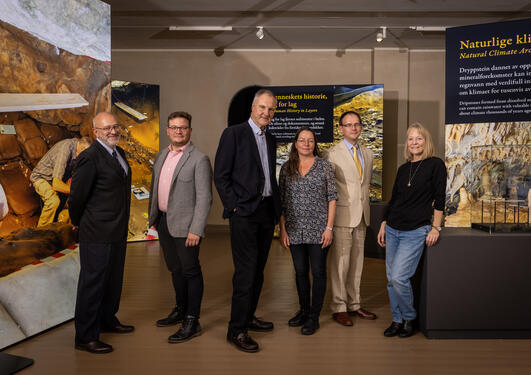The lives of our early ancestors on display at Cape Point
The Origins of Early Southern Sapiens Behaviour exhibition is launched at Cape Point, South Africa. The exhibition showcases remarkable discoveries from SapienCE main excavation sites augmented by Sea Change Project contribution.

Main content
"I am proud to say that this exhibition represents the culmination of 30 years of archaeological research and collaboration between our teams of experts in various fields including psychology, chronology and palaeoclimate. Our goal has been to shed light on the complex and fascinating evolution of early Homo sapiens and their cultural and cognitive abilities", Professor Christopher Henshilwood, director of SapienCE says.
30 years of archaeological research
The exhibition showcases the discovery of early innovative material culture made by our own species, Homo sapiens, in southern Africa and attempts to recreate the life experiences of our early ancestors, living in partnership with nature, including the Great African Seaforest, about 100 000 years ago.
The Origins of Early Southern Sapiens Behaviour exhibition jointly presented by South Africa National Parks, University of the Witwatersrand, and SapienCE is curated by award-winning documentary filmmaker Craig Foster and archaeologist Petro Keene, and is assembled by Carl Miller. It showcases the culmination of some 30 years of archaeological research in the southern Cape undertaken by SapienCE scientists Professor Christopher Henshilwood, Dr Karen van Niekerk, Professor Sarah Wurz and their research teams.
A unique multi-sensory experience
Their remarkable discoveries highlight the rich archaeological record of SapienCE main excavation sites: Blombos Cave, Klipdrift Shelter and Klasies River, all situated on the southern Cape coast of South Africa. The sites were occupied by early Homo sapiens between 120 000 and 50 000 years ago – a key period in the evolution of modern human behaviour.
The exhibition consists of 19 unique display panels, including films by Craig and Damon Foster, augmented by content from the Sea Change Project, allowing visitors a unique multi-sensory experience.
First evidence symbolic expression
The daily life of early Homo sapiens has been visually recreated for the exhibition that also includes exact replicas of the oldest engravings on earth, some of the earliest beads, the first known drawing and what is likely the first evidence for bows and arrows. The material remains of symbolic expression constitute the earliest confirmed evidence of recording information that could be shared and stored outside of the human brain - an invention that would change the course of our entire species.
Earlier iterations of this exhibition, which is now on display at the Cape of Good Hope Buffelsfontein Visitor Centre in Table Mountain National Park, were presented at Spier Wine Estate, Iziko South African Museum, and Origins Centre Museum at the University of the Witwatersrand.

